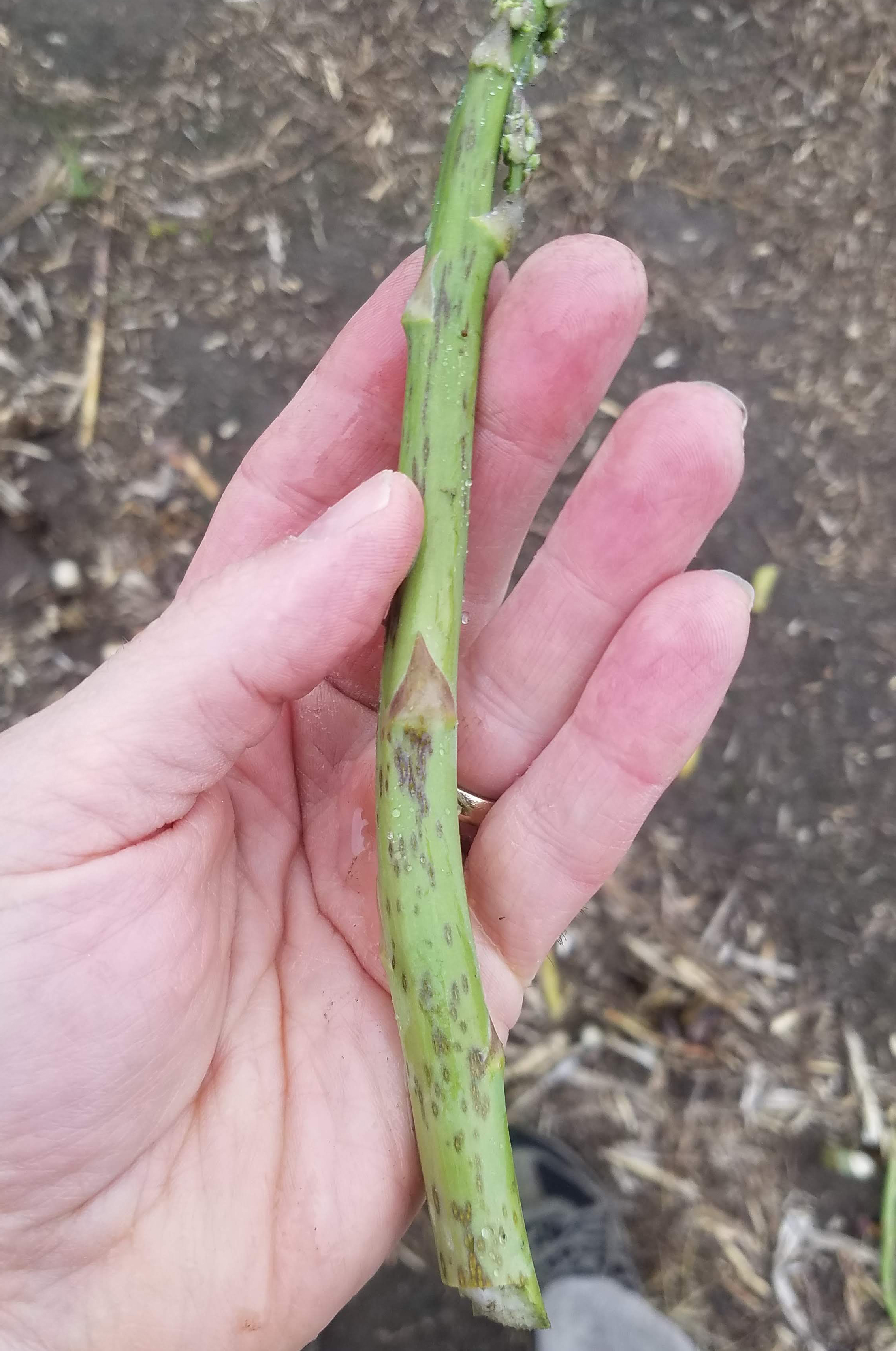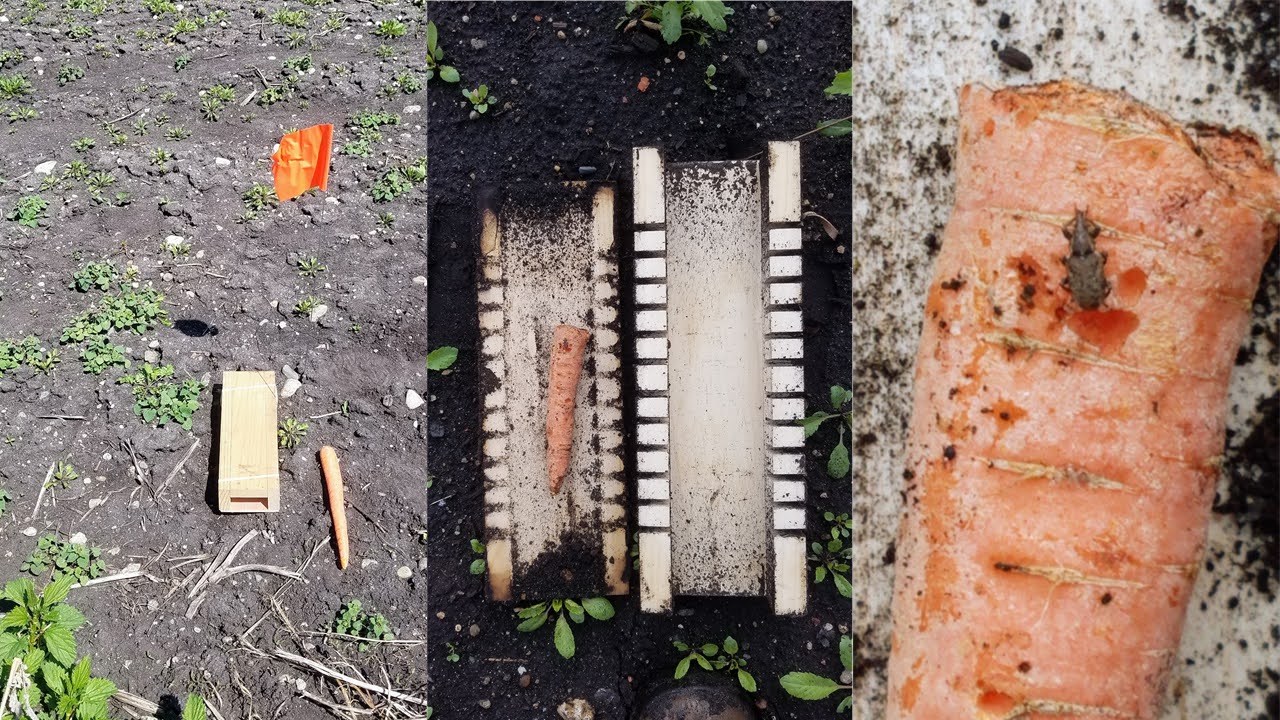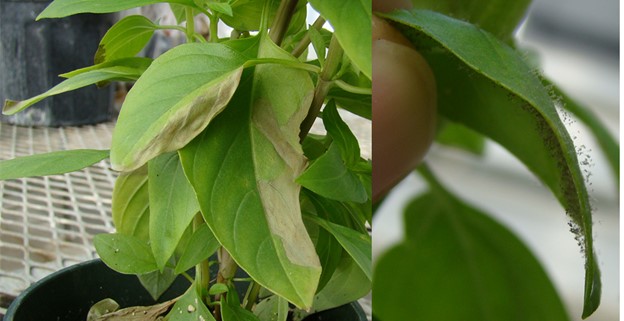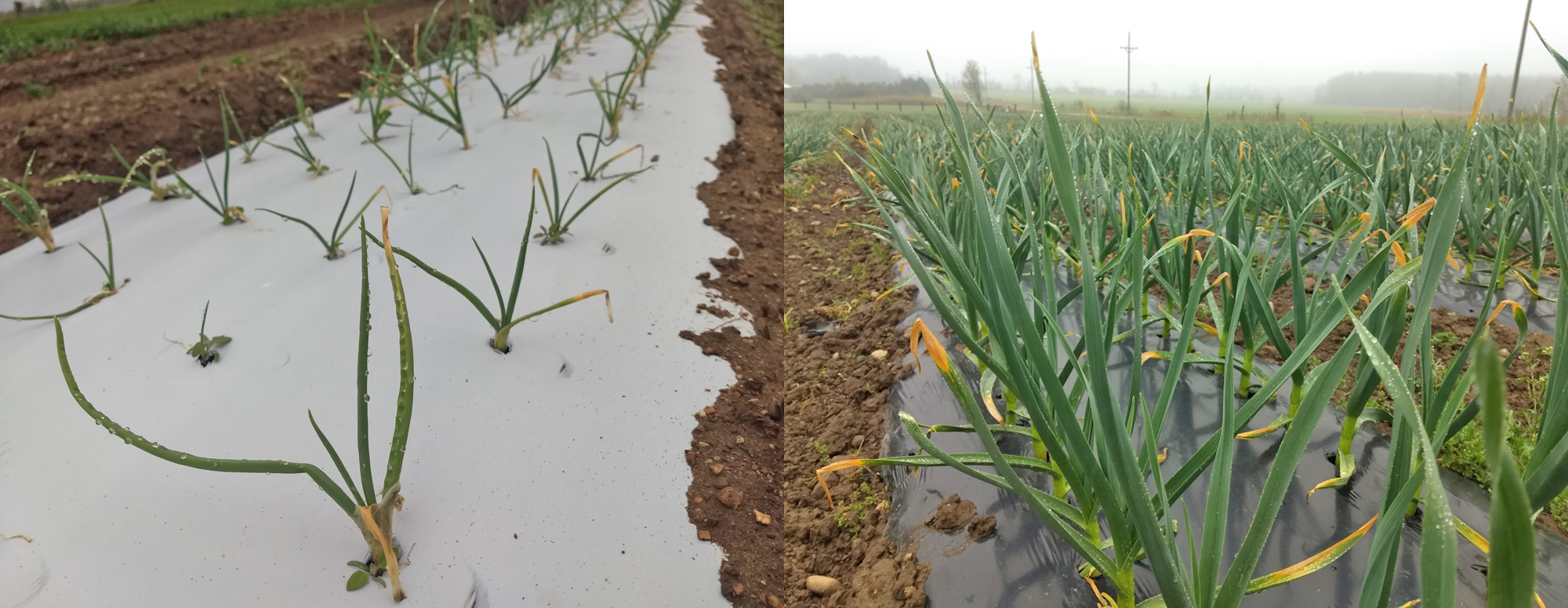Michigan vegetable crop report – May 5, 2021
Rollercoaster weather slowed planting progress this week.

Weather
Watch Michigan State University state climatologist Jeff Andresen’s weather forecast, or see highlights below.
We have seen surprisingly cool, dry weather courtesy of a stronger-than-expected dip in the jet stream and storm tracks hitting the Ohio River valley but mostly missing Michigan. Our top soils are starting the season dry, with moisture in the bottom 20th percentile of past Aprils.
There will be risks of frosts/freezes for northern and interior areas of the lower peninsula starting Thursday and persisting through the weekend, with lows in the upper 20s to low 30s. The coolest temperatures could be overnight Friday/Saturday.
Growing degree day (GDD) accumulations have slowed after a spring sprint, pushing us back to about a week ahead to near-normal for much of the state.
Cool, dry weather could persist for the next one to two weeks, with chances of trace to 0.25 inches of rain or frozen precipitation Thursday and Friday, and no significant chance of rain again until the end of next week.
MSU’s network of over 100 weather stations can be accessed at MSU Enviroweather.
There are several pest prediction models based on temperature accumulations, including seedcorn maggot, cabbage maggot, European corn borer and squash vine borer. Click on any of those pests to be taken to the model. Once there, change the Region and Station to one nearest you.
General crop management notes
Some herbicide burndowns, tillage, and lots of plastic-laying were underway over the last week, but not much was transplanted due to the freeze on Saturday morning, the hot and sunny Sunday and spotty wet weather the first of the week. Some growers with a public greenhouse may welcome the break in field work to divert workforce energy to getting the public-facing part of the business spruced up for traditionally big sale days, like Mother’s Day and Memorial Day.
Spring machinery start-ups
Rainy days are good for catching up on sprayer start-up. Devote at least a half day to getting clear and even water output from all nozzles. Refer to this airblast article and boom sprayers article. They both have a lot in common when it comes to plumbing, and it ultimately comes down to taking off all filters, nozzle screens, and nozzles and blowing out the crud, all the while inspecting the other moving parts for wear and routine lubrication. Hand-held, hand-pump and backpack sprayers are not immune to these issues either.

In gearing up the irrigation systems this spring, spend a half day going over your system with Lyndon Kelley’s irrigation kick-off article, and checking the condition of any overwintered liquid fertilizers and containers. Most liquid fertilizer products are stable for many years if stored properly, key considerations being relatively consistent temperatures and avoiding freezing temperatures that can fractionate/precipitate fertilizer salts. Check the label for proper storage for specific products and make sure you’re staying in line with regulations from MDARD for storage and handling of bulk liquid fertilizers.
Slow-release N considerations
As spring fertilizer applications are happening, there are a few notes on “enhanced efficiency” nitrogen (N) fertilizer options you might be considering. For urea-based fertilizers, two common categories of products out there are polymer-coated (i.e., “controlled release”) urea and chemical N “stabilizers/inhibitors” added to urea, most notably urease inhibitors.
Polymer-coated ureas (e.g., ESN and others) provide a controlled release of available N over several weeks to better match plant demand and reduce potential for early-season losses. These products are best applied pre-plant or early in the season to allow for extended release and should be incorporated with tillage (coated prills can float in surface runoff). Consider applying polymer-coated urea as a blend (30-70%) with conventional urea to control costs and ensure sufficient early-season N availability depending on conditions.
Chemical N stabilizers in the urease inhibitor family (e.g., Agrotain, N-Dure, others) have shorter term activity with a different goal, namely reducing potential volatilization losses from surface-applied urea. Urease inhibitors should be targeted to surface/topdress applications of urea-based fertilizers when soil temperatures are high (often later in the season) and sufficient rainfall or irrigation (0.5 inches) to incorporate the urea isn’t expected. They are generally not useful if the N will be tilled in or injected, since the potential for volatilization in those situations is low. Keep in mind that “nitrification inhibitors” are a different category with a different goal (preventing ammonium N from converting to the more loss-prone nitrate form), and they are not useful for preventing volatilization losses.
Crop updates
Asparagus
Scattered harvest had started this Monday, May 3, in Oceana County after high winds followed by rain, but the cool forecast means the full-on blitz is yet to come.

The high winds and following wet weather may translate to an increased risk of purple spot infection in early harvests, especially if weather remains wet and cool. Asparagus purple spot overwinters on last year’s fern. Spores are produced from debris during wet weather and can be discharged onto spears during rainy periods. Blowing sand can cause tiny wounds that create entry points for infection; disease symptoms can be more severe on the windward side as a result. This pathogen does not need wounding to infect spears. Cool weather means there is a longer period for infection to occur and develop before harvest.
Unfortunately, there is little that can be done during harvest to reduce this problem. Good management of this disease during the fern season can reduce the amount of inoculum that overwinters to cause spring issues and may be helpful. Growers may want to monitor their young fields that will not be harvested and apply a protectant application of chlorothalonil to prevent the early establishment of purple spot in these fields.

White cutworm is a sporadic, early-season pest that can feed on asparagus tips. If you suspect damage, dig down around the base of spears to see if a caterpillar is present. Harvest carts and mowers can also knick off tips. Permethrin (one-day preharvest interval, PHI) can be used if and when problems persist following chlorpyrifos application.
Carrots and celery
Celery has weathered cold temperatures OK, with early celery out under row cover or protected with irrigation. Cool soil and air temperatures may make recently set celery transplants more susceptible to herbicide injury. By the nature of its mode of action, Prowl H2O may cause root stunting under cold soil conditions, which in turn causes plant chlorosis (yellowing). The plants normally outgrow the stunting when temperatures increase. Celery plants can be tolerant of Dual Magnum, Zidua, Chateau and Caparol under cold conditions.
Carrot weevil is a sporadic but locally severe pest of celery, celeriac, carrots and parsnips that can get started early. Adult weevils overwinter and become active in late April to mid-May as temperatures warm. The adults lay eggs in the petioles of plants and grubs tunnel in the plant. In celery, this can cause plants to die, in the root crops, tunnels make plants unmarketable as well.
Research at the Ohio State University in parsley has suggested targeting young plants for protection can be helpful. Baythroid (one-day PHI), Brigade (21-day PHI), Mustang Maxx (one-day PHI), and Exirel (one-day PHI) have shown some activity in past Ohio trials and are labeled for celery. The easiest time to determine if this pest might be present is prior to transplanting or crop emergence, using a carrot-baited trap. At this time, wooden traps baited with carrots can lure in adults. Learn more in the Ohio State University Extension article, “Monitoring Carrot Weevils Using Wooden Boivin Traps.” Thankfully, this pest is typically limited to a few spots.

Cole crops
Some kale and collards were transplanted in Macomb County over the last week. Large transplants are more likely to button.
Cabbage maggot adults are likely emerged and laying eggs given degree day accumulations at the Hudsonville, Grant, Allegan, Lapeer and Blissfield Enviroweather stations. Peak egglaying was not forecast to occur in the next seven days.
Herbs
Basil downy mildew has plagued this popular herb for many years. Symptoms can occur both in the greenhouse and in the field.

The pathogen is considered to be seedborne and then can move from plant to plant via airborne sporangia. Just a few infected plants can result in enough sporangia to cause disease on numerous plants in a relatively short period of time. Luckily, there are several effective fungicides that can be used on basil. Some of the fungicide labels have specific wording that indicate in which instances these fungicides can be used. For instance, if producers are growing the transplants for sale to home gardeners, there are more options for fungicide applications than if the transplants are produced for transplant for field production. Since home gardeners do not apply, fungicides, registrants have gone forward with labels for downy mildew as the development of fungicide resistance is less likely to happen under these circumstances.
Lettuce
Lettuce in Imlay City, Michigan, had been under irrigation this past week due to dry conditions at the time.
Onions and garlic
There were a lot more onions on plastic in Macomb and Sanilac counties this week. Much of it was showing some frosted tips. Garlic in Sanilac County was shin-high. White-on-black plastic is a popular option for transplanted sweet onions. It has only recently been available as a biodegradable option through Bio360.

Late April freezes caused spotty injury in direct-sown onions at some locations. Dry soil conditions may also cause variability in emergence, both of onion seedlings and of the barley nurse crop. Overall barley cover crops have been earning their pay during this windy, dry start.
Cool weather can increase the potential for injury from application of Goaltender and Buctril herbicides. Plants degrade herbicides by metabolism. Cool temperatures slow plant metabolism, reducing degradation of herbicide and increasing the risk of crop injury. This cool and dry weather is also not favorable for weed growth. Therefore, waiting a few days for warmer weather and safer application conditions will not change the weed control situation much.
Onion maggot can cause issues this time of year. Seed treatments including the FarMore FI500 package or TriGard provide good protection in direct-sown onions. Chlorpyrifos is the main product of choice when trying to protect onions grown from sets or transplants. Where practical, row covers can provide protection if this pest is a perennial problem (and onions were not grown in that spot the previous year). Unfortunately, there is no good rescue treatment for onion maggot once plants are infested. Thankfully, onions develop a degree of tolerance to onion maggot as they grow. This won’t help with initial stand loss, but hopefully means that once the first generation is over, most damage will be done. Currently, the first generation of flies is just kicking into gear. Emergence of onion maggot flies likely started over the past one to 1.5 weeks and is yet to peak based on degree days at the Dowagiac, Lapeer and Hudsonville Enviroweather stations.
Potatoes
Planting continued this week. Some growers got mixed seed sizes that resulted in uneven emergence. Hilling early (at soil crack pre-emergence) or late (up to 12 inches or greater plant height post-emergence) typically increases total and marketable potato yield. Growers seeing uneven emergence may consider hilling when the majority of the stand has reached the stage typical for their operation, unless other varietal or weed management needs are of concern.
Both liquid and dry seed piece treatments can be used effectively for potato pest management, but require proper storage and handling of seed pieces, favorable planting conditions, and appropriate product application and coverage. Liquid treatments can be applied more uniformly but require careful calibration and application. Excess moisture from liquid applications without proper handling could promote rot or breakdown of cut tubers.
In-furrow pesticide applications can help to manage many potato seed-borne or soil-borne diseases. Late-season or post-harvest storage rots, such as Pythium leak (caused by Pythium ultimum) and pink rot (caused by Phytophthora erythroseptica), may also be targets for these early-season applications. Efficacy varies by product, active ingredient, and timing and is further dependent on variety, growing conditions, handling during and after harvest, and disease pressure. For Pythium leak, products containing mefenoxam or metalaxyl have been effectively applied in-furrow at-planting or as foliar treatments later in the season. Systemic downward-movement of pesticides in the plant is limited so treatment of the seed in-furrow, or of tubers post-harvest, may be more effective for direct protection from seed or storage rots.
Registered product recommendations can be found in the 2021 Midwest Vegetable Production Guide for Commercial Growers.
Other root crops
Early plantings of beets that went in before the freeze have been/may be replanted in some spots in Newaygo and Ottawa counties.
Strawberries
Planting was underway in Macomb County recently. Preemergence herbicide options to apply at planting in strawberries are Devrinol (incorporate into soil before transplanting or apply after plants are well established), Sinbar (apply after transplanting but before new runners begin to root), Spartan (apply before or after transplanting), Prowl H2O (apply before or after transplanting), and Dual Magnum (apply before or after transplanting). Stinger may be applied later during the season to control composites, woodsorrel, white campion, and wild buckwheat.
Flowers are between popcorn and full bloom in many areas of southwest Michigan, but they have not yet reached the popcorn stage in Tuscola County. Damage from the April freezes is becoming easy to see. Black centers indicate dead blooms. Some growers with slower varieties are still treating for spittlebug and strawberry clipper. For these treatments, be aware of chemical choices and the presence of pollinators.
Tomatoes
Some freeze-damaged transplants were reported, and we witnessed some poor consumer-grade pots left out at retail on Saturday morning that were blackened and wilted.
Some of the earliest hoophouse tomatoes were green and verging on 3 inches in diameter. Commercial bumble bees have been arriving over the last few weeks. They can take a little time to acclimate to a new setting and spend a couple days bouncing off the plastic until they get their bearings. It’s good to line up the bee order well ahead of bloom so they are settled when the tomatoes start blooming.
If you graft, be on the lookout for bully rootstock shoots that come up from below the graft union. These will overtake and outcompete your scion variety. One house we visited this week had a number of these bullies that were already taller than the scion variety, and many volunteers from last year’s tomato crop. Effectively two types of tomato weeds. Remove them.
Tomatoes that are being held in the greenhouse as growers wait for the field and weather conditions to improve, may begin to develop gray mold caused by Botrytis cinerea. Just as its name implies, this disease is easily recognized by its grey masses of mold that form most commonly on the older leaves that may be dying due to age or lack of light. This fungus thrives on conditions that include high humidity, overcast conditions, and extended periods of leaf wetness. Fungicides effective against Botrytis that are registered for use on flowers are generally not registered for use on tomatoes in the greenhouse. Cultural strategies are needed and include venting the greenhouse, decreasing the watering when possible, and increasing the temperature by one to two degrees to decrease the relative humidity. Spacing plants to allow the air to circulate within the canopy is also recommended.

Herbicide drift
Lawn care companies are ramping up with weed and feeds, and grain producers are performing preplant and post-plant burndowns with various chemistries that can negatively affect vegetable crops. Dicamba and 2,4-D Fact Sheet Series is a great resource from Ohio State University that outlines ways to prepare and respond to drift damage.
Events
- May 12, 12:30-1:30 p.m. Pre-Season Pumpkin Tips (1 RUP for live listeners, also available for later listens via podcast)
- May 12, 12 p.m. Chestnut Chat webinar series
- May 13, 7-7:30 a.m. Field Crops Virtual Breakfast: Postemergence Weed Control (1 RUP for live listeners)
Food safety
Need your water tested for the Food Safety Modernization Act (FSMA)? Check out the Michigan Ag Water Lab Map.
On-Farm Readiness Reviews are designed to help fresh produce growers feel prepared and ready for a full implementation of the FSMA. They allow growers to walk through their operation with a small team of food-safety experts and discuss how to meet the new FSMA Produce Safety Rule requirements. Sign up for an on-farm readiness review.
Farm Supervisor Produce Safety Courses are being hosted through the MSU Online Learning Portal - D2L. They are self-paced and free. It will be available for farm supervisors starting July 19. Register here.



 Print
Print Email
Email

